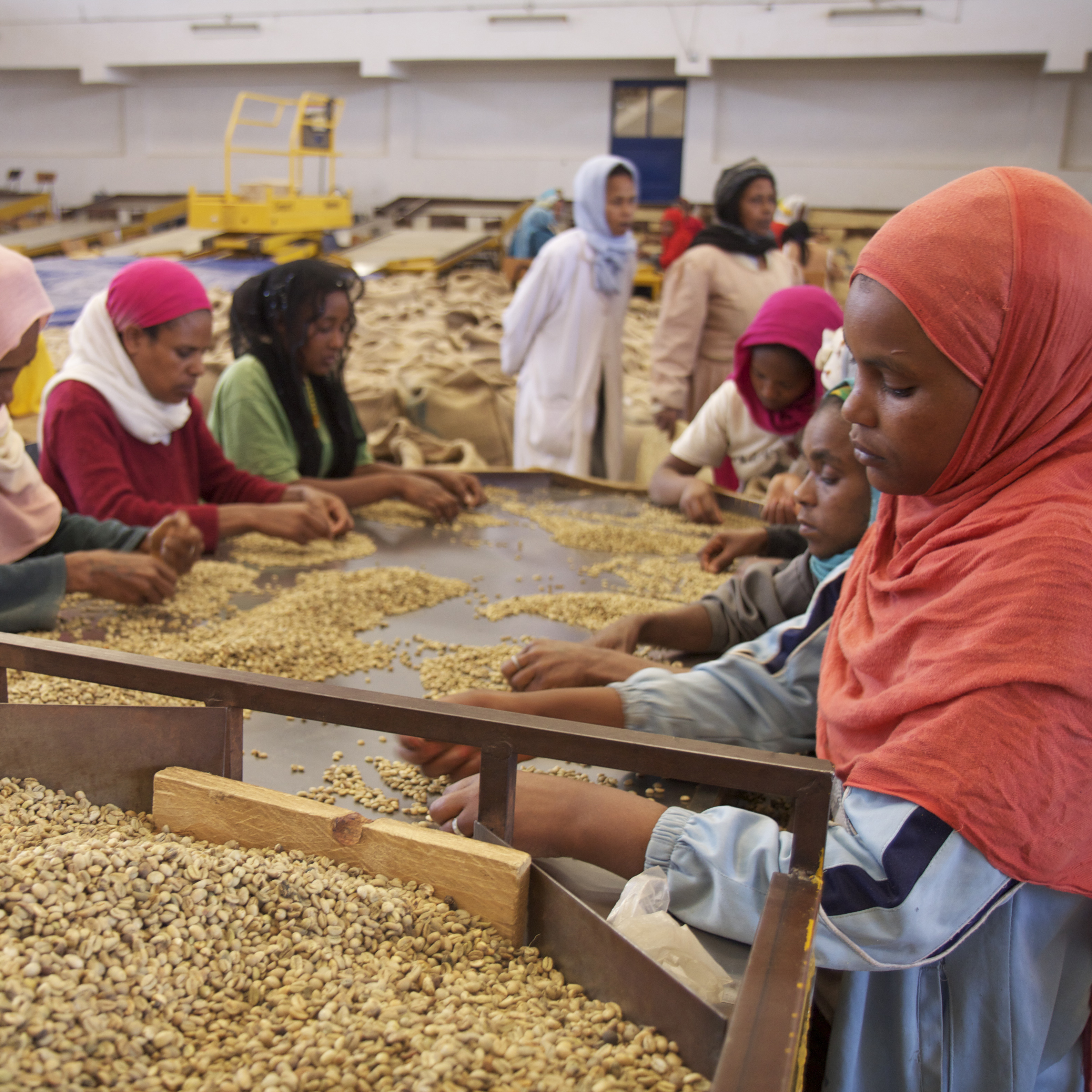
Ethiopia
Type: 100% native arabica Heirloom
Processing: Washed (80 – 85 %) or dry process (10 – 15%)
Classification: GR2
Region: Sidamo
History
Legend has it that coffee was discovered by an Ethiopian shepherd called Kaldi over a thousand years ago. One day, he noticed the strange behaviour of his goats after they had eaten some small red berries, which looked like cherries.
Intrigued, he spoke to some Sufi monks about the goats’ amazing energy. The monks, however, fearing they were the work of the devil, threw the berries into the fire. The perfume they gave off, however, piqued their curiosity: they crushed them, put them to soak, and drank the resulting concoction. The drink gave them strength and energy, and soon became the national drink.
Today, Ethiopia has the widest genetic diversity of coffee bushes and varieties of arabica in the world.
Geography
Ethiopia has four main production areas.
Sidamo: Located in the south of the country, it produces nearly 14% of Ethiopian coffee, including two washed coffees of very high quality—the moka sidamo and the Yirgacheffe moka.
Kaffa: It is made up of two major regions (which between them account for 27% of national production)—Limu, which produces famous washed coffees, and Djimma, known for its natural coffees.
Wallaga: Its washed and natural mokas account for nearly 40% of national production. The best selections are generally more fully textured, sweeter and “wilder”.
Harrar: Located in the east of the country, at an altitude of almost 2,000 metres, this hot and dry, almost desert-like region produces a coffee with earthy aromas.
Agronomy
Botanical species: Only Arabica
Botanical varieties: Mixture within the heirloom variety: moka and geisha
Altitude: Between 1,500 m and 1,800 m
Harvest :
Natural: from October to late March
Washed: late July to December
First shipment: December
Processing :
Dry process: djimma, lekempti, harrar, and sidamo
Washed process: sidamo, limu, Yirgacheffe, and bebeka
Average caffeine content: 1.5%
Economy
Since the time of the legend of Kaldi, coffee has become deeply rooted in the Ethiopian culture and economy. The country devotes over 400,000 hectares to growing it, and that makes it the world’s fifth-largest producer and tenth-largest exporter: 60% of its production, or 172,000 tonnes, is exported each year.
In contrast to the large plantations in South America, Ethiopian coffee is grown almost exclusively on family farms: coffee grows in gardens and forests, often alongside other subsistence crops such as maize, cassava, plantains, and khat.